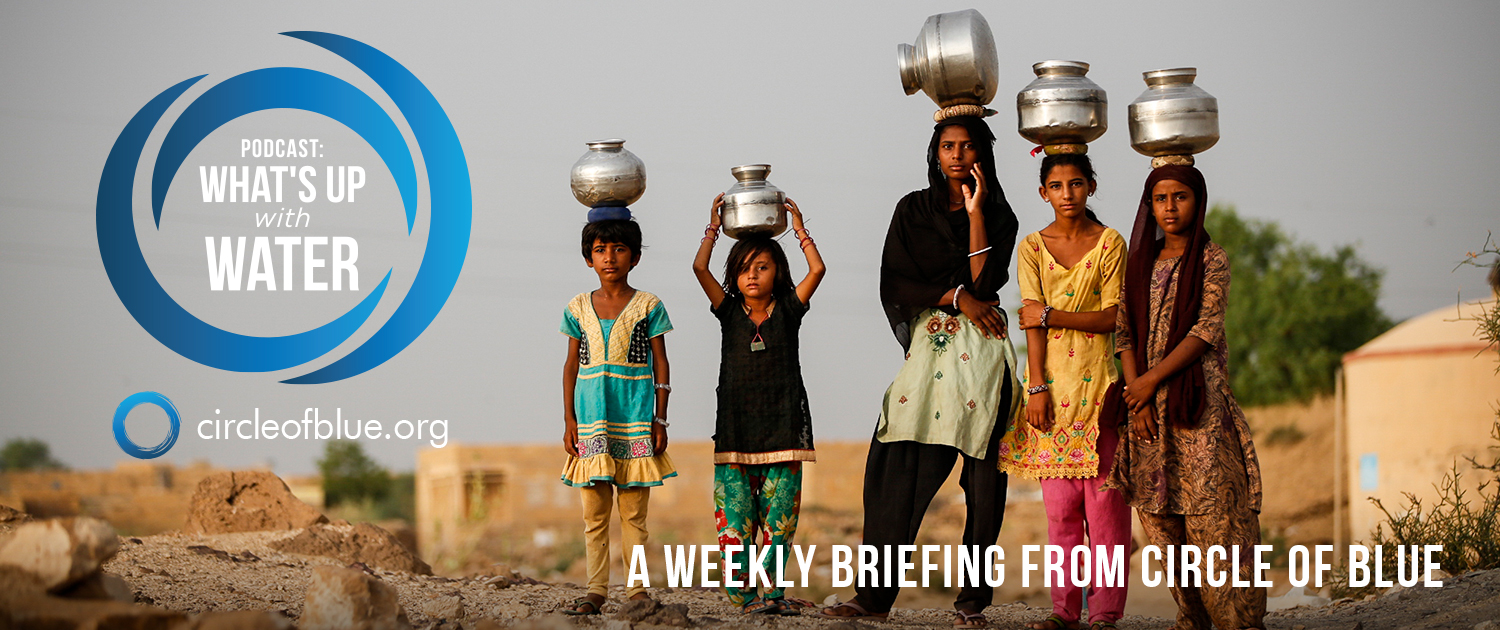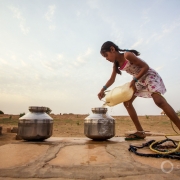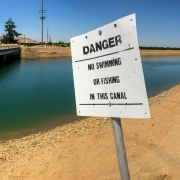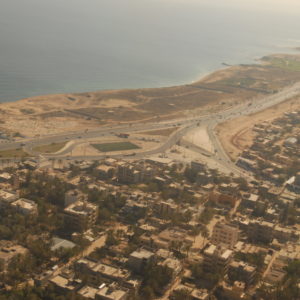What’s Up With Water – April 9, 2018

This week’s edition of What’s Up With Water includes coverage on:
– Water rights in New Mexico
– Capital spending on U.S. water infrastructure
– Australia‘s Murray-Darling basin plan
– Libya‘s Great Man-Made River
Transcripts
What’s Up With Water for April 9, 2018
I’m Eileen Wray-McCann, for Circle of Blue, and here’s What’s Up with Water, a condensation of the world’s water news.
In the U.S., the New Mexico Court of Appeals last week upheld a major legal settlement allocating water rights from the state’s largest river to the Navajo Nation.
Over 20 community water and irrigation districts in the San Juan River basin had challenged the settlement, which Congress approved in 2009. They argued that water from the San Juan River isn’t needed for troubled Navajo irrigation systems. The appeals court said that the Indian tribes were not obligated to prove immediate beneficial use of the water.
An attorney for the irrigation groups says they will appeal to the state Supreme Court, saying that the ruling to uphold the settlement “destroys New Mexico’s remaining water supply.”
In other U.S news, capital spending on the nation’s water systems is projected to rise by 11% in the next decade. That’s according to a report by Bluefield Research, a Boston water market research firm, which analyzed planned water infrastructure spending in 100 major cities. The U.S. spends about 65 billion dollars a year on capital projects in the municipal water sector.
The report says part of the increase is to address poor water quality, failing systems and environmental mandates. In many U.S. locations, infrastructure is aging – over half the projected spending is directed at pipes, pumps and waterways. Environmental mandates include the need to remediate problems like stormwater runoff or water pollution. The report notes that cites have a wide range of capital needs, from manhole covers on up – but says that water utilities are increasingly moving to more complex data-based systems for water management.
In Australia, economists and environmental scientists warn that, after five years in effect, the complex and contentious plan to restore the country’s most prominent river system is in crisis. The Murray-Darling River, which transformed arid land into agricultural bounty, nourished ecosystems and sustained indigenous cultures, is failing. And, say these experts, the Murray-Darling Basin Plan, intended to restore the river’s health, is failing as well.
The basin plan began in 2012 as a joint effort between governing and water bodies to alleviate water stress caused by vast irrigation projects. Its goal: to restore the river by keeping more water in it, either by the government buying back water rights or by farmers using water more efficiently, so as to need less.
But the plan encountered setbacks. Communities don’t like to part with water because it stresses their economies, like drought does. Enforcing rules is difficult, especially when water meters are old or absent. Lack of compliance, water theft, indigenous rights, conflict between those upstream and those downstream – all these issues, set in the context of a multi-billion dollar agricultural system, make for a volatile mix.
Various parties to the plan, notably New South Wales, large cotton producers and other major irrigators, have regularly talked of walking away from the agreement, and have used their political leverage to demand more favorable terms. State and federal governments seem daunted by difficult policies, and the Murray-Darling Basin plan authorities struggle with enforcement.
All these factors undermining the plan have placed water reform at great risk, according to environmental scientists. They say that the current water recovery target is insufficient for a healthy river system. And they point to one more challenge to the delicate and fractious balance between water for humans and the river itself: the current plan makes no allowance for climate change. That issue was put off for the 10-year review, but temperatures are already rising.
In Libya, one of the world’s largest engineered water systems is under threat. Called the Great Man-Made River, this vast network of pipelines was phased in during the 1990s to bring fossil freshwater to millions in growing cities and farms in northern Libya.
But as Mahmoud Abdelwahed reports for Al Jazeera, the $9 billion dollar project suffers from poor maintenance due to falling oil revenues and political instability. In some areas, supply has dwindled to a trickle, and many Libyans are desperate for alternatives.
Some people, such as those in [Miss-RAH-tah] Misrata, are able to drill deep wells to find water. It is a costly process, and these wells are often contaminated with chemicals, salt or sulfur, which require treatment. Those in higher terrain have no choice but to dig reservoirs and rely on water tankers to replenish them.
Meanwhile, South Africa keeps an eye on its water-stressed Western Cape Province, announcing that Cape Town’s “Day Zero” can be avoided in 2018. Day Zero, the projected date when the city turns off water service to homes and businesses, has moved from this August to next year, thanks to strict water conservation and rising dam levels.
Cape Town residents continue to be restricted to 50 liters (about 13 gallons) of water per person per day. Guidelines include washing one laundry load a week, flushing toilets once a day, and using only one liter of water per day to wash and prepare food.
Dam levels in Western Cape Province have not changed much in the last week or so, but other provinces are showing promising gains. The forecast calls for above-average rainfall over the next three months. The rainy season usually begins in May.
And that’s What’s Up With Water…We’d like to share what’s up where you are – Tweet us with your water news: @circleofblue #whatsupwithwater.
Eileen Wray-McCann is a writer, director and narrator who co-founded Circle of Blue. During her 13 years at Interlochen Public Radio, a National Public Radio affiliate in Northern Michigan, Eileen produced and hosted regional and national programming. She’s won Telly Awards for her scriptwriting and documentary work, and her work with Circle of Blue follows many years of independent multimedia journalistic projects and a life-long love of the Great Lakes. She holds a BA and MA radio and television from the University of Detroit. Eileen is currently moonlighting as an audio archivist and enjoys traveling through time via sound.










Leave a Reply
Want to join the discussion?Feel free to contribute!